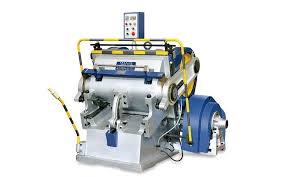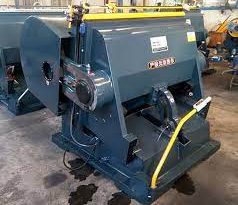Maximizing Productivity with Automated Die-Cutting Systems
In today’s fast-paced manufacturing environment, maximizing productivity is paramount for businesses aiming to stay competitive. Automated die-cutting systems represent a significant advancement in achieving this goal, offering speed, precision, and reliability far beyond what manual or semi-automated processes can provide. This article explores the impact of automation in die-cutting on manufacturing productivity, detailing the benefits and considerations for companies looking to adopt these systems.
The Shift to Automation in Die-Cutting
The transition from manual and semi-automatic die-cutting machines to fully automated systems has been driven by the need for higher efficiency and lower production costs. Automated die-cutting machines are equipped with advanced features like computer-controlled setup, automatic material feeding, and real-time monitoring, which significantly reduce manual labor and minimize the potential for errors. This shift not only improves production speed but also enhances the quality of the final product.
Key Advantages of Automated Die-Cutting
- Increased Production Speed: Automated systems can operate continuously without the need for frequent breaks or shifts changes, significantly increasing the throughput of die-cutting operations.
- Enhanced Precision and Consistency: With computerized control, automated die-cutting machines ensure that each cut is precisely aligned and consistent with the last, reducing material waste and improving product quality.
- Reduced Labor Costs: By automating the die-cutting process, companies can allocate their workforce to more critical tasks, optimizing labor costs and improving overall efficiency.
- Scalability: Automated die-cutting systems can be easily scaled up to meet increased production demands without the need for proportionate increases in labor, making them ideal for growing businesses.
Implementing Automated Die-Cutting Systems
While the benefits of automated die-cutting systems are clear, implementing these technologies requires careful planning and consideration. Companies must assess their current production needs, available space, and budget to determine the most appropriate system. Training for operators is also crucial to ensure they can effectively manage and maintain the equipment. Additionally, businesses should consider the long-term scalability of the system to accommodate future growth.
Future Trends in Automated Die-Cutting
The future of automated die-cutting looks promising, with ongoing advancements in technology poised to further enhance productivity and efficiency. Innovations such as AI and machine learning are expected to improve the adaptability and flexibility of die-cutting systems, enabling them to handle a wider range of materials and more complex designs. Additionally, the integration of Internet of Things (IoT) technology could allow for real-time monitoring and optimization of die-cutting operations on a global scale.
Conclusion
Automated die-cutting systems offer a powerful solution for businesses seeking to maximize their manufacturing productivity. By leveraging the speed, precision, and reliability of these systems, companies can significantly improve their production processes, reduce costs, and enhance product quality. As technology continues to advance, the potential for automated die-cutting to transform the manufacturing landscape becomes increasingly evident, marking it as a crucial investment for future-ready businesses.



